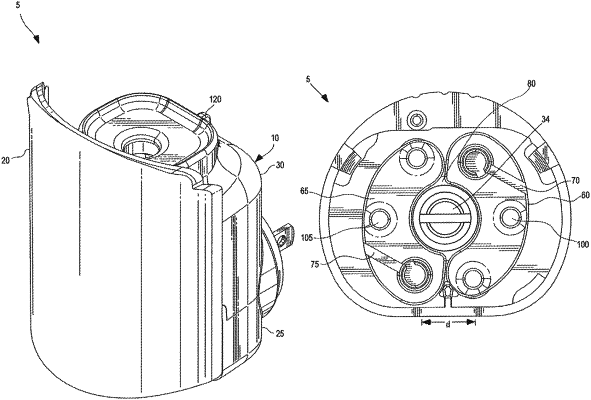| CPC A61L 9/037 (2013.01) [A01M 1/2077 (2013.01); A61L 2209/13 (2013.01); A61L 2209/15 (2013.01)] | 20 Claims |

|
1. A device for adjustably heating a compound to disperse the compound by volatilization wherein the compound is delivered to a wick and exposed to a heat source, comprising:
a curvilinear first heating element, the first heating element including a first end and a second end;
a curvilinear second heating element, the second heating element including a first end and a second end;
wherein the first and second heating elements cooperate to form a heating chamber, and the wick is positioned within the heating chamber;
a first movement enabling structure associated with the first heating element;
a second movement enabling structure associated with the second heating element;
the first and second movement enabling structures being configured to allow movement of the first and second heating elements relative to one another;
an adjustment mechanism in mechanical communication with and cooperating with the first and second movement enabling structures, the first and second movement enabling structures in communication with and cooperating with the first and second heating elements, to produce selective relative movement of each of the first and second heating elements; and
wherein movement of the adjustment mechanism in a first direction produces relative movement of each of the first and second heating elements toward one another and wherein movement of the adjustment mechanism in a second direction produces relative movement of each of the first and second heating elements away from one another,
wherein in a first configuration, when the first and second heating elements are moved toward one another, the first end of the first heating element and the first end of the second heating element contact one another, and the second end of the first heating element and the second end of the second heating element contact one another to form the heating chamber such that the heating chamber completely surrounds a perimeter of the wick; and
in a second configuration, when the first and second heating elements are separated from one another, the first and second heating elements cooperate to form the heating chamber such that the heating chamber does not completely surround the perimeter of the wick.
|